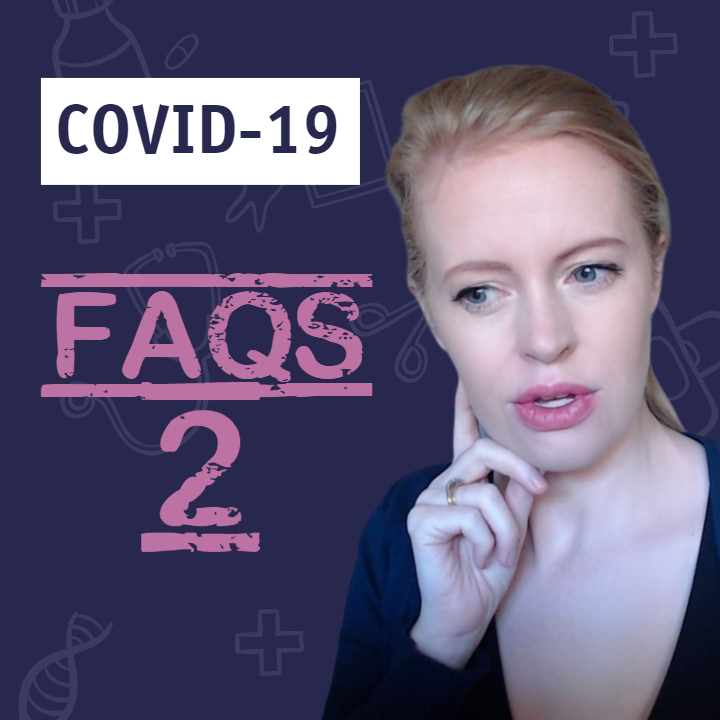FAQs
Please take a look here for the best ways to get our books and special discount offers.
We do not currently offer consultations as we are full time researchers and publishers. Our platforms have allowed us to connect with more people than ever before and we are passionate about continuing on this path. We hope that our contributions and explanations of scientific research allow you to feel empowered when it comes to your health and wellbeing. If you would like Drs Mark and Sam to address a specific issue in their bi-monthly Q&A sessions, you are welcome to become a member of Dr Sam’s Community.
Since the late 1800s the medical establishment has asserted that germs are the cause of numerous diseases. These ‘germs’ include bacteria and fungi, which have been shown to exist, and “viruses,” which have never been shown to exist. This is the basis of “germ theory” and the allopathic concept of one disease/one germ/one treatment. While microbes may proliferate in certain conditions, they are not the cause of disease – something has to go wrong with the body (or the “terrain”) first. Those of us that advocate Terrain Therapy do not make the mistake of blaming the microbes!
In the modern era, a “contagious disease” is generally considered to be an illness caused by a microbe that can transmit between “hosts” such as humans. While we have millions of microbes on and inside our bodies, they have never been shown to be the cause of disease. Hence, microbes may certainly pass between us, but in this sense the concept of an “infectious” or “contagious” disease is false. For more information, please see my video “The Truth About Contagion”.
We have explained in many of our presentations why “antibodies” do not require the existence of “viruses” and do not prove that microbes are disease-causing. A summary of the immunologists’ unfalsifiable paradigm concerning antibodies can be found in “Is Immunity Real?“
Medical interventions should be an individual’s choice after they are fully informed of the real risks and benefits. Like many people who have dedicated time to researching vaccines, there is no current vaccine that we would allow to be injected into ourselves or our children. This was not a decision we made overnight – it resulted from years of studying the literature as well as co-authoring Virus Mania and numerous other publications. We are always happy to consider new evidence, but for us personally, it is clear that no vaccine can provide health benefits.
Sometimes after watching (or maybe not watching?) one of my videos we get a viewer sending us a link to a paper claiming that a particular virus has been isolated. An example would be “Virus Isolation from the First Patient with SARS-CoV-2 in Korea”.
Firstly, the term “isolation” is used loosely even within the virology community and its meaning is not what most people might think. It does not mean that a virus was able to found (e.g. in a blood or sputum sample) in a person said to have a particular condition. Because attempts to obtain viruses directly from people have proven futile, virologists have resorted to indirect techniques to “isolate” alleged viruses. These indirect techniques include:
- Detecting genetic fragments with the Polymerase Chain Reaction (PCR).
- Observing cytopathic effects (CPEs) in laboratory tissue culture experiments and “viruses” coming out of the cells.
- In silico “genome” sequencing of crude patient samples or lab tissue cultures.
With the results of the above, the researchers may declare that they have “isolated” a virus, but no virus is required to produce these outcomes. The methodology itself can produce the “evidence” without any virus at all:
- The PCR is simply a process to amplify target genetic sequences. The PCR does not tell us where the genetic fragments came from or if the person is “infected” with anything.
- CPEs can be observed in cells that are stressed in test tubes through manipulation such as the addition of toxic antibiotics and “passaging” of the cells – i.e. no virus required. The nanoparticles that are observed budding from cells cannot be distinguished from extracellular vesicles outside of arbitrary declarations that they “look like viruses”. Another step is required, and that is demonstrating that these particles, by themselves, are capable of infecting a host and causing disease. Dr Mark Bailey formally articulated why the virologists’ “gold standard” technique is trapped within a fatal logical flaw in Virology’s Event Horizon.
- These alleged “genomes” are constructed from mixed tissue samples containing millions of genetic fragments – they are not from purified virions. There is no proof that the computer software assembled “genome” comes from a virus. (For the claims relating to “virion” genomics, please see Mark’s essay, Virus, Bacteriophage & Single “Virus” Genomics.)
These themes are explored in more detail in A Farewell to Virology and Virus Mania, as well as many of our videos and written publications. We have also openly challenged the virologists to perform blinded and controlled experiments to test whether their indirect techniques are even valid on their own terms.
Bacteriophages and giant viruses can be found in nature and have been truly isolated. However, as Dr Stefan Lanka has suggested these do not appear to be pathogenic (disease causing) in nature. Dr Mark Bailey has also summarised this subject in his essay Virus, Bacteriophage & Single “Virus” Genomics.
We are not aware of any alleged virus that has been directly isolated from a human or any other animal. The virologists largely gave up trying to isolate viruses from diseased tissue in the 1950s and in the modern era they focus almost exclusively on indirect molecular detection techniques. Rather than actually truly isolating alleged disease causing viruses, they changed the definition of the word ‘isolation’ – see the previous FAQ for some examples.
The definition of a virus is a tiny particle consisting of proteinaceous coat within which is its genome (DNA or RNA). It is said to be an intracellular parasite that can infect and replicate inside a host organism, causing disease. However, it has never been demonstrated that any such particles have these properties. This brings into question the whole theory of “viruses” as the cause of disease and is discussed in more detail in Virus Mania and The Final Pandemic.
More technical refutations of the existence of “viruses” can be found in Dr Mark Bailey’s essay A Farewell To Virology and with regard to “HIV,” The Perth Group’s HIV – A Virus Like No Other.





